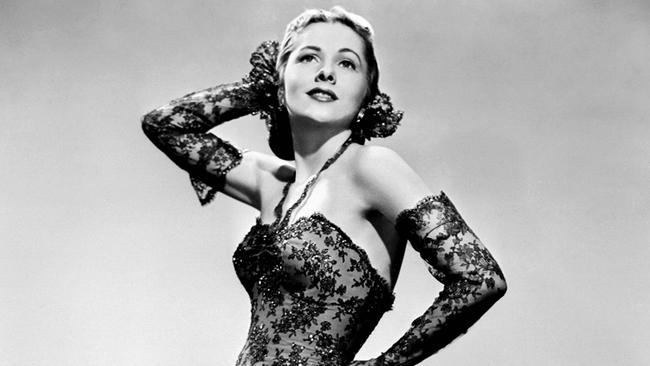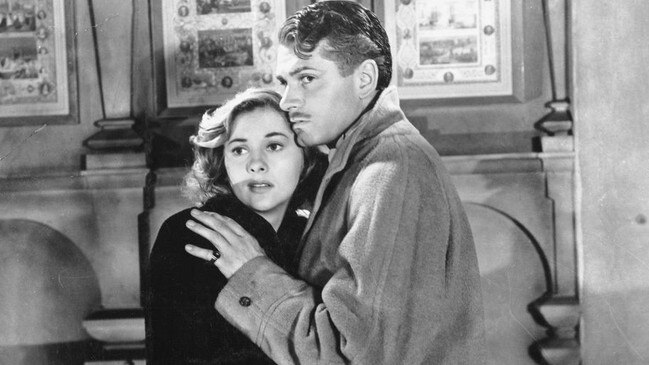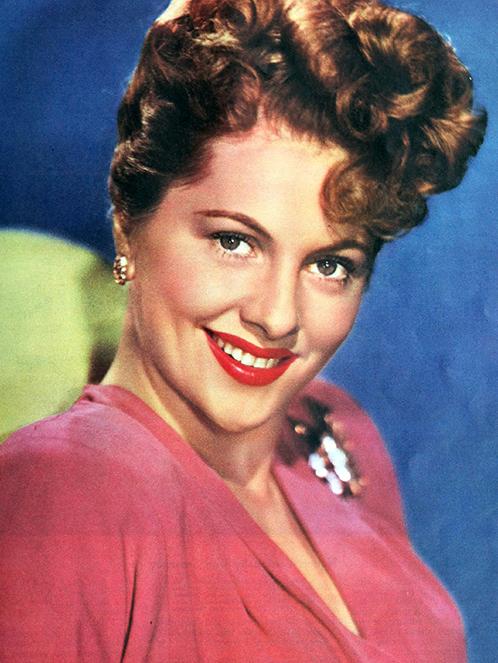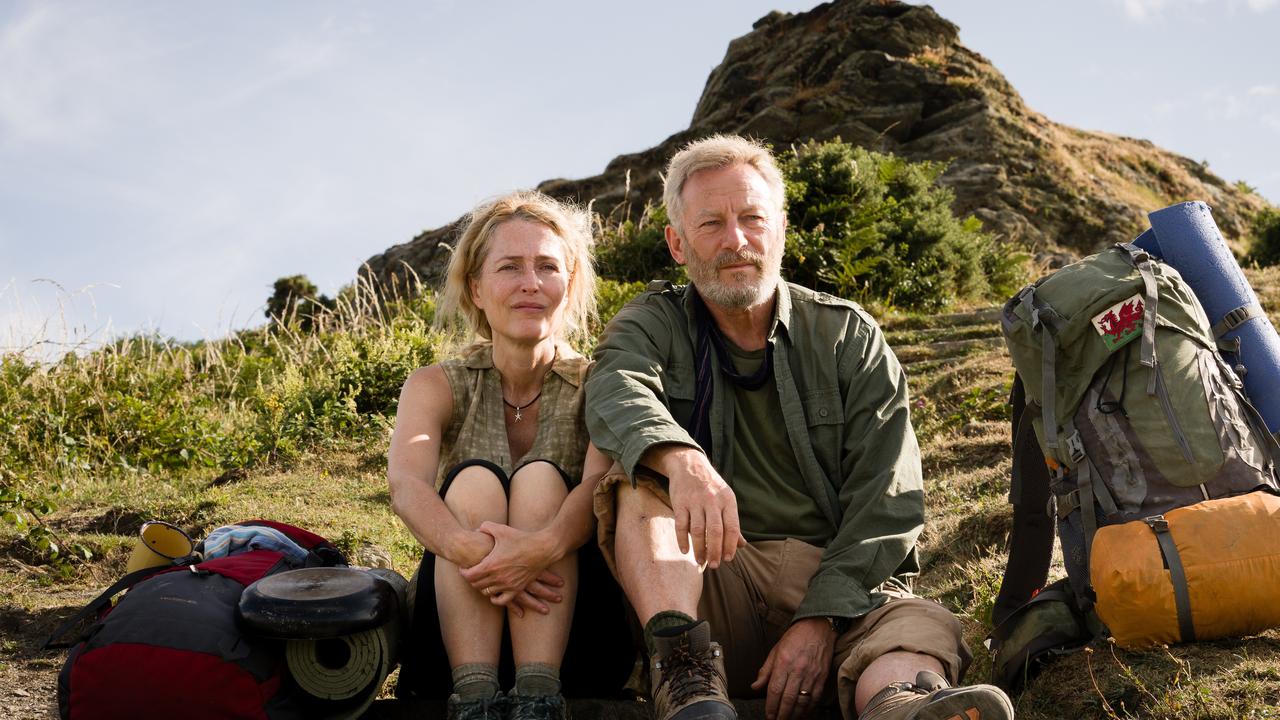Joan’s arc of movie triumphs: my memories of a true Hollywood star
Joan Fontaine, like her sister Olivia de Havilland, was a rare screen talent and I cherish the times we spent together.

In February 1982, I was invited by Moritz de Hadeln, director of the Berlin Film Festival, to be a member of the International Jury. It was an honour I accepted without question. The pros and cons of judging a collection of about 20 films to decide which is best (and which actor, actress, director is better than the others) is not the subject of this piece. Instead, I want to talk about the president of the Berlin jury in 1982: Joan Fontaine.
I first encountered Fontaine on the screen when I went to the Victoria Cinema in Newquay, Cornwall, one wet day in June 1953. The film was Ivanhoe (1952), a Hollywood production made in Britain, very loosely based on the book by Sir Walter Scott. Apart from the miscast and rather dull Robert Taylor, who played the title role, the film — a spectacular swashbuckler — boasted a superior cast. George Sanders was the villain and there were two heroines: Elizabeth Taylor played Rebecca, a Jewish beauty, and Joan Fontaine played Lady Rowena, who hangs out with the dastardly Prince John (Guy Rolfe) while King Richard is trying to get home from the Crusades.
Joan and her older sister, Olivia, were born — in 1917 and 1916 respectively — in Tokyo to English parents. Her birth name was Joan de Beauvoir de Havilland and both sisters were so sickly as children that the family moved to California for their health.
As teenagers, both were beautiful and ambitious. It was Olivia de Havilland who got the first big break; her first major screen role was opposite Australian Errol Flynn in Captain Blood (1935). It was Flynn’s first Hollywood film, and the romantic pirate saga was an instant success. De Havilland’s star rose through the 1930s in such films as The Adventures of Robin Hood (1938, also with Flynn) and culminated in 1939 when she played Melanie in Gone with the Wind.
Joan’s career was slower to take off. Under the name of Joan Burfield she made her debut the same year as her sister, 1935, in a forgotten picture titled No More Ladies. She got to dance with Fred Astaire in A Damsel in Distress (1937), but she was not one of his favourite partners. She wore black face makeup for scenes in Gunga Din (1939), opposite Cary Grant, and the same year made a minor impact in the all-female ensemble, The Women. But it was Alfred Hitchcock who transformed her into a really big star.
Hitchcock had left his native England just before the outbreak of war in 1939 and arrived in Hollywood under contract to David O Selznick. His first American film was Rebecca, a gothic adaptation of the Daphne du Maurier novel.
Fontaine was cast in the leading role as the unnamed woman who meets the handsome and wealthy Maxim de Winter (Laurence Olivier) in the south of France while she is working as companion for the disagreeable Mrs Van Hopper (Florence Bates). They marry and Maxim takes her home to Manderley, the clifftop house in Cornwall where he had lived with Rebecca, the first Mrs de Winter, who had died under mysterious circumstances and whose presence still seems to affect everyone who lives in the house, especially the malevolent housekeeper, Mrs Danvers (Australian actor Judith Anderson).

Rebecca is not typical Hitchcock (it’s more of a Selznick film), but among its considerable qualities is Fontaine’s performance. It was her favourite among her films and she thought she should have won the Best Actress Oscar for it (though Rebecca was named Best Film in 1940, the actress award went to Ginger Rogers for her “straight” acting performance in Kitty Foyle.)
For Fontaine, the accolade was only postponed by one year. In 1941, she won Best Actress for playing Lina, a rich English girl who marries Johnnie (Cary Grant), a charming ne’er-do-well, and then begins to suspect he plans to murder her. This is much more typical of Hitchcock; the screenplay is witty, the minor characters, such as Nigel Bruce’s Beaky, are well drawn and there are eye-catching moments (the luminous glass of milk — that might be poisoned — that Johnnie carries upstairs to the bedridden Lina).
The film was based on “Before the Fact”, a gripping book by Francis Iles, but it is, ultimately, hopelessly compromised because the producers would not allow Cary Grant to be a murderer. Accordingly, a new ending was hastily shot, without the director’s input, in which the actors look very much like stand-ins.

Despite this, Fontaine won her Oscar, and many in the industry felt the award was compensation for missing out the year before. Three years later, Fontaine gave another stellar performance in the title role of Jane Eyre, an excellent adaptation of Charlotte Bronte’s novel, directed by another ex-pat Englishman, Robert Stevenson. She is genuinely touching as the shy young woman who has survived an appalling “education” at the hands of the righteous Henry Brocklehurst (Henry Daniell) and who takes the role of governess to little Adele (Margaret O’Brien) at the creepy Thornleigh Hall on the Yorkshire Moors. Her scenes with Orson Welles, who gives a commanding performance as the mysterious Mr Rochester, are potent.
But the best was still to come. In 1948, Fontaine played the title character in Letter from an Unknown Woman, a masterly adaptation of a Stefan Zweig story directed by yet another ex-pat, Max Ophuls. Ophuls was a cinematic master and his evocation of Vienna at the turn of the century is sublime. Louis Jourdan plays the self-centred, womanising composer who is unaware the young girl who lives in the same apartment building is besotted with him. When she grows up she abandons everything for him — her family, her husband, even her son — but he doesn’t even know her name. This is heartbreaking stuff, and Fontaine, who convincingly ages from 14 to about 35, is magnificent. It’s her finest role.
She made other films, of course, of variable quality, the last of which was released in 1966. When we met in 1982, her film career was a thing of the past, but she was happy to talk about all her films — especially Rebecca — though she remained unenthusiastic when I suggested that her greatest role was as the unknown woman. She loathed the film, she said. Ophuls was too slow, too meticulous; the picture (which the company run by her then-husband, William Dozier, had produced), went over budget and was a commercial failure. Other than that, she refused to discuss it.
Over the two weeks of the Berlin Festival we spent a good deal of time talking. She had become bitter, especially when the subject of Olivia came up (she kept a most unflattering photograph of her sister in her wallet). Olivia had won two Oscars — for To Each His Own (1946) and The Heiress (1949) — and was still working. As jury president, Joan was opinionated and given to irrational prejudices (films from communist countries were anathema to her). As a result, it was a difficult but not unrewarding fortnight. In the end, the jury gave the award to a German film, Rainer Werner Fassbinder’s Veronika Voss, a black-and-white drama about an actress.
I saw Joan once more, in Montreal a year later. We had a relaxed and amiable discussion. She retired from films and died in 2013, aged 96. Her sister, Olivia, still lives; she is now 104 years old.
Ivanhoe screens on Google Play, iTunes and YouTube to rent or purchase. (Other films mentioned above are currently unavailable).




To join the conversation, please log in. Don't have an account? Register
Join the conversation, you are commenting as Logout